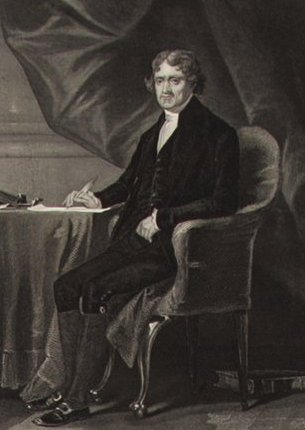
By Jim O’Neal
Thomas Jefferson was 57 years old when he was sworn in as president on March 4, 1801, in a simple ceremony in Washington, D.C. He was the first president to take office in the new capital, then a city of 6,000, but without representation in Congress. In 1961, the 23rd Amendment to the Constitution granted the district one non-voting, at-large delegate to the House of Representatives and three electoral votes in presidential elections, but no representation in the U.S. Senate. In 1973, they were granted limited self-government, which includes a mayor and a city council with 13 elected members.
Since the passage of the amendment, the district’s three electoral votes have been cast for the Democratic Party’s presidential and vice presidential candidates in every election. They are bound by law to never have more electoral votes than a state (in this case Wyoming, which has three).
Denounced as a radical and atheist by his political opponents, Jefferson became the first leader of an opposition political party to wrest control of the national government from the party in power. Despite grim prophecies by the outgoing Federalists that the Constitution would be overthrown, he proved to the world the strength of the American republic and its democratic system. Jefferson believed the United States should remain an agrarian country of small farms and a national government that offered little interference in the lives of its citizens. He warned of the evils of large cities – with disease, poverty and centralized power that fostered corruption.
However, as president, in his own words, he “stretched the Constitution till it cracked” by using presidential powers to double the size of the country, presumably to give people room to spread out and avoid dense urbanization (the Louisiana Purchase), and discharge major political appointees of his predecessor. Chief Justice John Marshall restrained him from applying the same principle to federal judges.
After suffering through the embarrassment of the Aaron Burr-Alexander Hamilton affair, he chose the elderly George Clinton for vice president in his second term, with the obvious intent to ensure a VP that was too old to succeed him. He then orchestrated the election of his old Virginia friend and Secretary of State James Madison to become the fourth president.
Refusing all pleas for a third term, he more than welcomed his pending retirement, writing “Never did a prisoner released from his chains feel such relief I shall in shaking off the shackles of power … I thank God for the opportunity of retiring from them without censure and carrying with me the most consoling proofs of public approbation.”
For his epitaph, he asked for “not a word more” about his time as vice president or president. After 17 years in retirement, his wish was granted and his cherished University of Virginia (which he founded) and the Declaration of Independence seem fitting memorials for this remarkably versatile man to which we all owe an eternal debt of gratitude.
 Intelligent Collector blogger JIM O’NEAL is an avid collector and history buff. He is President and CEO of Frito-Lay International [retired] and earlier served as Chairman and CEO of PepsiCo Restaurants International [KFC Pizza Hut and Taco Bell].
Intelligent Collector blogger JIM O’NEAL is an avid collector and history buff. He is President and CEO of Frito-Lay International [retired] and earlier served as Chairman and CEO of PepsiCo Restaurants International [KFC Pizza Hut and Taco Bell].
